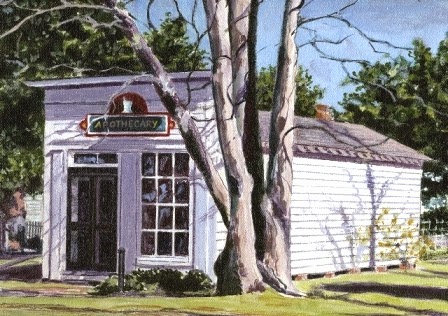 |
| Allen Davis House circa 1774 |
Below is an excerpt from Francis Borden Mace's 8-page introduction of Mary Warshaw's book, Historic Beaufort, North Carolina - A Unique Coastal Village Preserved - "Fond Memories of Life in Beaufort"
"...Our large rented house at 120 Queen Street, home to Davis ancestors for decades, was a child's paradise. Less than a block from the water, it had a screened-in upstairs sleeping porch and swinging hammock just for kids! The dirt basement was over five feet high with a brick fireplace in the center that extended up through the two-story house. I loved hiding in the long unused lower fireplace during "hide and seek" games. The yard went back forever and included pecan, walnut, fig, pear and peach trees, with a scuppernong grape arbor at rear, surrounded by more than a dozen plum trees.
"...Our large rented house at 120 Queen Street, home to Davis ancestors for decades, was a child's paradise. Less than a block from the water, it had a screened-in upstairs sleeping porch and swinging hammock just for kids! The dirt basement was over five feet high with a brick fireplace in the center that extended up through the two-story house. I loved hiding in the long unused lower fireplace during "hide and seek" games. The yard went back forever and included pecan, walnut, fig, pear and peach trees, with a scuppernong grape arbor at rear, surrounded by more than a dozen plum trees.
"At nine years of age after eating green grapes for an hour sitting alone on the very top of the arbor, I developed a severe stomach ache. After Mother’s 'I told you so,' and hours of increasing pain, Daddy drove us to the hospital in Morehead City to see Dr. Ben Royal, who opened Morehead City's first hospital in 1911. As we crossed a railroad track while I was sitting as close to Mother as I possibly could, I heard her tell Daddy that something ruptured. She did not have to tell me, I knew. I stayed in the hospital for three months with tubes coming out of my stomach for drainage. The kids in my school prayed for me and eventually I was back on my feet. I have not eaten green grapes since..."





